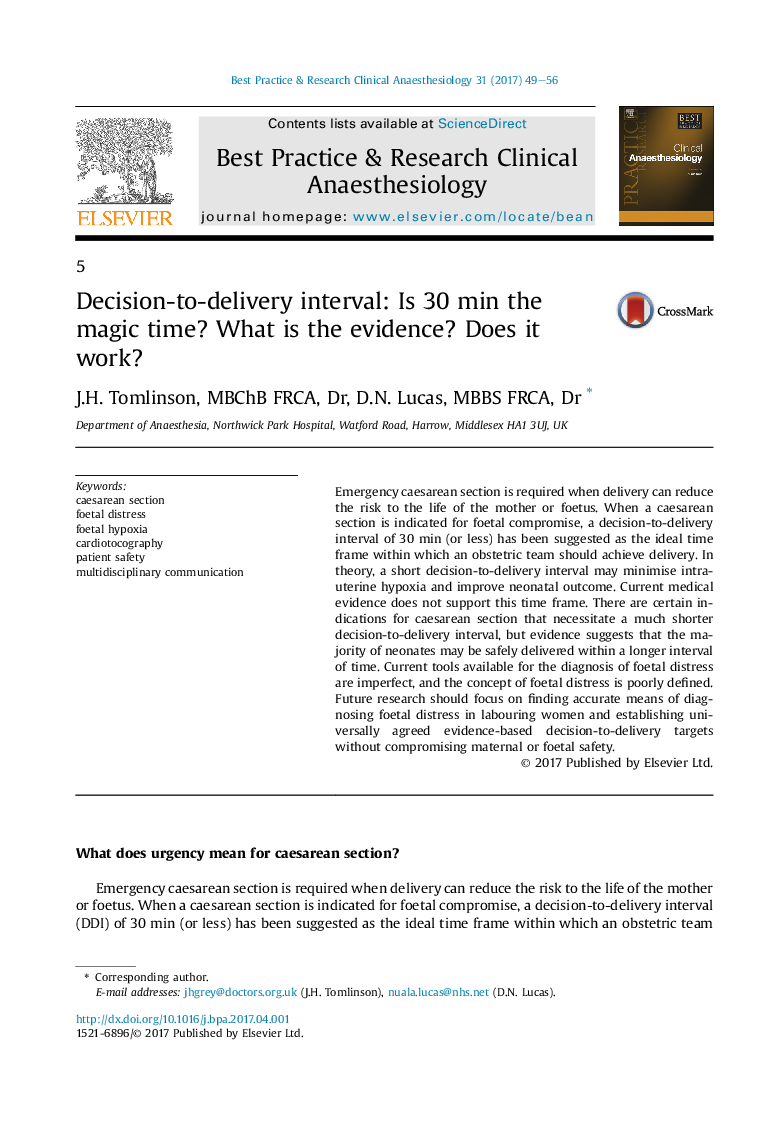| Article ID | Journal | Published Year | Pages | File Type |
|---|---|---|---|---|
| 5580605 | Best Practice & Research Clinical Anaesthesiology | 2017 | 8 Pages |
Abstract
Emergency caesarean section is required when delivery can reduce the risk to the life of the mother or foetus. When a caesarean section is indicated for foetal compromise, a decision-to-delivery interval of 30Â min (or less) has been suggested as the ideal time frame within which an obstetric team should achieve delivery. In theory, a short decision-to-delivery interval may minimise intra-uterine hypoxia and improve neonatal outcome. Current medical evidence does not support this time frame. There are certain indications for caesarean section that necessitate a much shorter decision-to-delivery interval, but evidence suggests that the majority of neonates may be safely delivered within a longer interval of time. Current tools available for the diagnosis of foetal distress are imperfect, and the concept of foetal distress is poorly defined. Future research should focus on finding accurate means of diagnosing foetal distress in labouring women and establishing universally agreed evidence-based decision-to-delivery targets without compromising maternal or foetal safety.
Related Topics
Health Sciences
Medicine and Dentistry
Anesthesiology and Pain Medicine
Authors
J.H. (Dr), D.N. (Dr),
